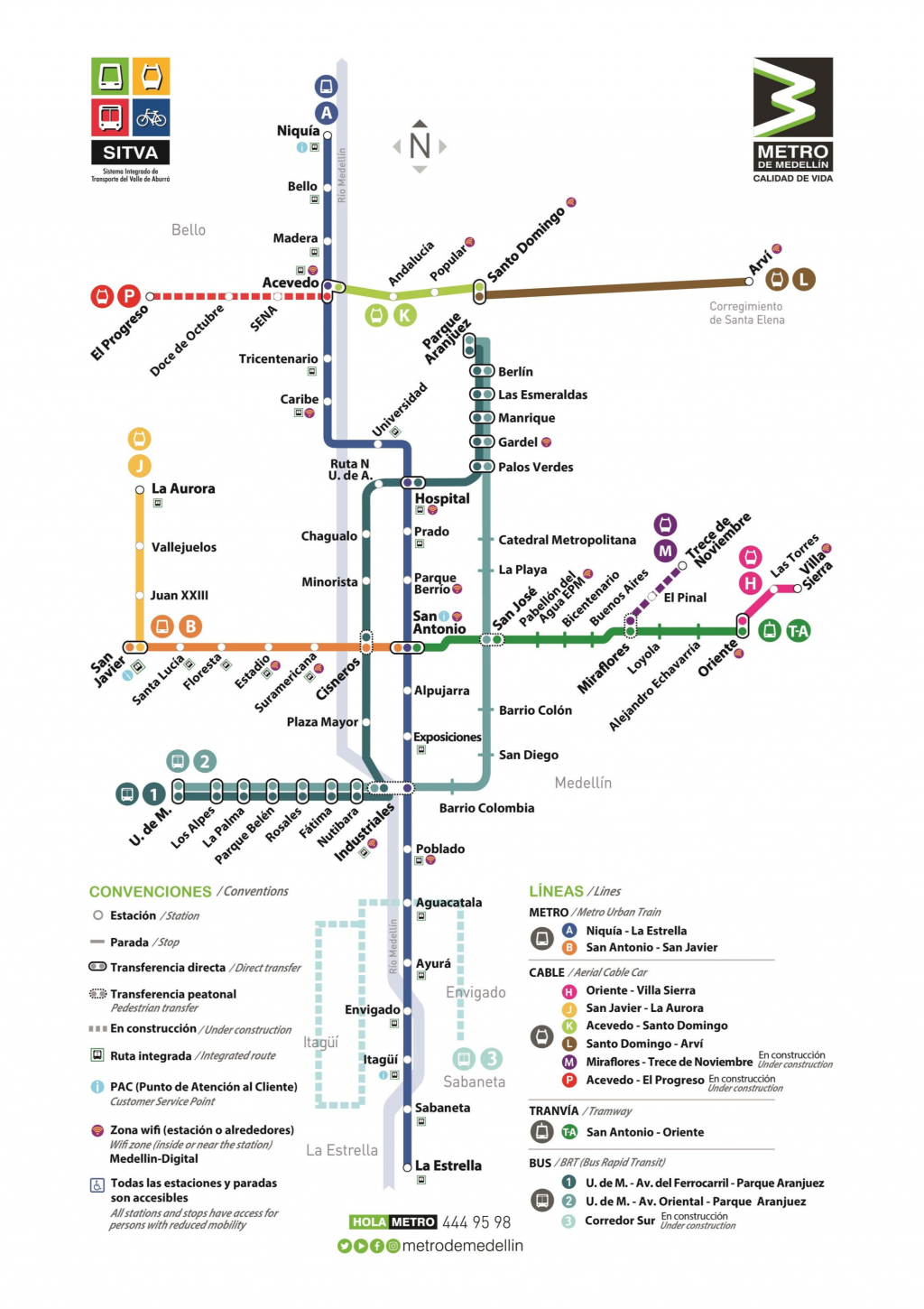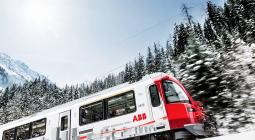Το τελεφερίκ σαν λύση για τις μετακινήσεις στις πόλεις.

In Medellin city, Colombia, cable cars have helped enhance mobility for marginalized neighborhoods, reduce pollution, and improve quality of life.
Overview
In 2004, the city of Medellin, Colombia, was the first municipality in the world to use cable car (also known as aerial tramway) technology for urban transportation in high-elevation, densely populated areas. In the past, the technology was used mainly in the tourism sector (i.e., ski lifts for ski resorts).
Today, there are four Metrocable lines operating in Medellin and two more are under construction. The cable car system will have a total length of 14.7 kilometers. The first lines have reached full capacity.
The Metrocable lines connect to the metro system and have increased its use, improving mobility and quality of life in the city.
Context
Medellin, the second largest city in Colombia, is located in the central Andes, 1,479 meters above sea level. It has its center in the valley, with a number of neighborhoods with informal settlements in the hills that surround it. In the early 2000s, residents of the neighborhoods could get into town only if they walk or were able to catch the infrequent, unreliable buses. The Metro (lines A and B) served the lower part of the valley and was underutilized because of access issues until the Metrocable was introduced.
Challenges
Crippling congestion and air pollution
Private vehicles and under-maintained minibuses were the means of transportation in these neighborhoods, contributing to a worsening quality of air and increased carbon emissions.
Lack of safe and efficient public transportation
Uphill neighborhoods were isolated and unreached by by the mass transit system. This contributed to the physical and social marginalization of these districts, which had poor access to the labor market, a serious lack of opportunities, and high rates of crime and violence.
Solutions

Since 2005, France-based Poma SAS has installed four Metrocable lines in Medellin, with two more lines opening in 2019. These are all connected to the Metro and transport around 100,000 people every day. There are currently 16 stations and 498 cabins with a total capacity of 15,500 passengers per hour per direction.
The cable car system is well adapted to go across natural or manmade obstacles, such as hills, rivers, and railways. It can connect isolated or remote neighborhoods to city centers, which helps increase access to jobs, economic inclusion, and social services.
A cable car system offers many advantages to municipalities:
- The system is easy to integrate with low space requirements (25 square meters for a station).
- It can be built quickly (12–18 months).
- It is more affordable than a tramway, subway or bus systems, with lower operation and maintenance costs, minimal carbon footprint, and limited use of city land.
- The system is safe and posts record availability levels.
- Cable car lines typically have a length of 1 to 5 km. Capacity can reach up to 5,000 passengers per hour per direction.
- It can feed other urban transport systems such as the metro and tramways, or serve as the central mass transit line.
Numbers and facts
| 6 Number of lines by 2019 (two lines under construction) |
| 14.7 kilometers Total length |
| 16 Number of stations |
| 498 Number of cabins |
| 15,500 passengers Total capacity per hour per direction |
Results
In Medellin, the system changed people’s lives, by reducing the commuting time from 2 hours to 17 minutes for some underserved parts of the city, creating opportunities for residents, and fostering social inclusion. The impact is particularly great for poorer communities of remote and congested neighborhoods.
Other benefits include reduced travel cost and number of accidents, and less respiratory diseases because of improved air quality.
In addition, the system has generated carbon emission savings as a result of reduced usage of buses and other fossil fuel-powered transport. The United Nations Framework Convention on Climate Change has certified carbon savings from the Metrocable. The system generates income through the Clean Development Mechanism of the Kyoto Protocol.
Further, aerial ropeways have strong symbolic value to local people. These innovative transport systems often become a new landmark and a tourist attraction.
Lessons
Integrate the cable car into the public transport system and broader urban development
The Metrocable system is part of a long-term sustainable transport plan that prioritizes mass transit and nonmotorized modes of transport over private vehicles. Broader urban development projects supported investment in public transport with efforts to enhance public spaces, expand pedestrian infrastructure, improve social housing, and build new urban amenities. As with the Metrocable, these projects involved extensive community participation and consultation.
Political will is key
The Metrocable received strong support from the Mayor of Medellin, who was committed to the Metrocable project as part of the wider urban development. The first phase of the project was financed jointly by the municipality and the publicly owned Metro de Medellín, while the second phase received support from Agence Française de Development (AFD).
Fabien Abinal





